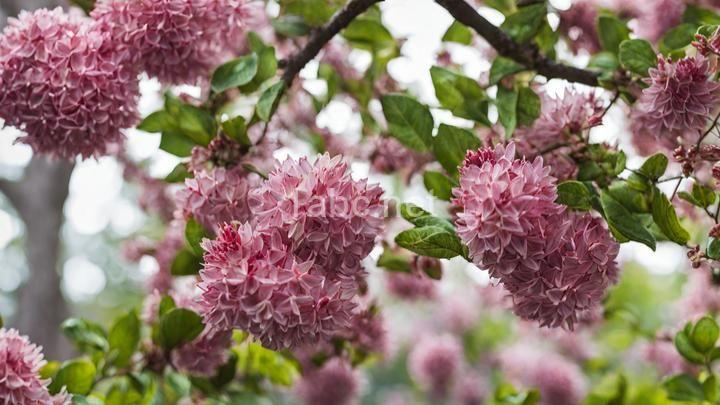Creating a Resilient Garden: Strategies for Protecting Trees and Shrubs from Extreme Weather

Introduction:
Welcome, gardening enthusiasts! We are excited to share with you some valuable strategies for creating a resilient garden that can withstand the challenges of extreme weather. As nature lovers, we understand the importance of protecting our precious trees and shrubs from the harsh effects of heatwaves, droughts, heavy rainfall, and strong winds. In this article, our aim is to provide you with practical tips and techniques to ensure the long-term health and vitality of your garden.
I. Understanding the Impact of Extreme Weather on Trees and Shrubs:
Extreme weather conditions can have a significant impact on the health and growth of our beloved trees and shrubs. Heatwaves, for example, can cause excessive water loss through evaporation, leading to dehydration and stress. Droughts, on the other hand, can result in insufficient water supply, hindering the plants' ability to thrive. Heavy rainfall can lead to waterlogging, which can suffocate the roots and cause root rot. Strong winds can cause physical damage, breakage, or uprooting of trees and shrubs.
Different tree and shrub species have varying vulnerabilities to these weather events. Some species may be more tolerant of heatwaves but sensitive to heavy rainfall, while others may be more resistant to strong winds but struggle during droughts. Understanding these vulnerabilities will help us choose the right strategies to protect our green friends.
II. Choosing Resilient Tree and Shrub Varieties:
One of the first steps to creating a resilient garden is selecting tree and shrub varieties that are well-suited to your region's climate. Look for resilient varieties that have proven to withstand extreme weather conditions. Native species are often a good choice as they are adapted to the local climate. Some examples of resilient tree varieties include oak, cedar, and pine, while shrubs like viburnum, lilac, and juniper are known for their resilience.
Resilient varieties typically have certain characteristics that make them more resistant to extreme weather. These may include tolerance to heat and drought, deep and extensive root systems, and sturdy branch structure. When purchasing new trees or shrubs, make sure to select healthy nursery stock. Look for plants with well-developed roots, strong stems, and vibrant foliage. Avoid plants with signs of disease, pest infestation, or poor overall health.
III. Proper Planting Techniques:
Proper planting techniques are essential for establishing resilient trees and shrubs. Start by preparing the soil before planting. Remove any weeds, rocks, or debris and amend the soil if necessary. It's important to dig a hole that is wide and shallow, allowing the roots to spread out naturally. Planting too deep can suffocate the roots, while planting too shallow can expose them to harsh weather conditions.
Spacing is another crucial factor to consider. Give your trees and shrubs enough room to grow and spread their roots without overcrowding. This will prevent competition for resources and reduce the risk of disease transmission. After planting, remember to water your new additions thoroughly and provide a layer of mulch around the base of the plants to conserve moisture and suppress weeds. Fertilize as needed to promote healthy root development.
IV. Water Management Strategies:
Efficient water management is crucial, especially during periods of drought or water restrictions. To ensure your trees and shrubs receive adequate hydration without wastage, consider implementing water-saving techniques. Drip irrigation systems deliver water directly to the roots, minimizing evaporation and runoff. Rainwater harvesting is another effective strategy, collecting and storing rainwater for later use. Smart irrigation controllers use weather data to adjust watering schedules, optimizing water usage.
Monitoring soil moisture levels is essential in determining when and how much to water. Invest in a soil moisture meter or simply use your finger to check the moisture level in the top few inches of soil. Adjust your watering schedule accordingly, avoiding overwatering, which can lead to root rot, and underwatering, which can cause stress and dehydration. Remember, a well-hydrated plant is better equipped to withstand extreme weather conditions.
V. Wind Protection Measures:
Protecting trees from strong winds is crucial to prevent physical damage. Consider planting windbreaks or shelter belts to create a barrier against the wind. These can be achieved by planting wind-resistant tree species strategically around your garden. Examples include evergreen trees like spruce or cedar, which provide year-round protection. Additionally, installing physical barriers such as fences or walls can help redirect wind flow and reduce its impact on your trees and shrubs.
Pruning plays a vital role in enhancing tree structure and reducing wind damage risk. Regularly inspect your trees and shrubs for dead, weak, or crossing branches that may pose a danger during windy conditions. Remove these branches using proper pruning techniques, ensuring clean cuts that promote healing. Pruning also allows for better air circulation, reducing the chances of fungal diseases.
VI. Heatwave Preparation:
Heatwaves can be particularly challenging for trees and shrubs, as they can quickly deplete soil moisture and subject plants to excessive heat stress. To protect your garden during these extreme events, proper mulching and shading are key. Apply a layer of organic mulch around the base of your trees and shrubs, such as wood chips or straw. Mulch helps retain moisture, regulate soil temperature, and suppress weed growth.
Providing temporary shade structures or protective coverings can also offer relief during intense heatwaves. Use shade cloth or old bed sheets to create a temporary canopy over vulnerable plants. This will shield them from direct sunlight and reduce the risk of sunburn or wilting. Remember to remove the shading once the heatwave passes to allow for normal growth and photosynthesis.
VII. Dealing with Heavy Rainfall:
Managing excess water during heavy rainfall is crucial to prevent waterlogging and root rot. Proper drainage systems are essential to ensure water flows away from your trees and shrubs. Consider installing French drains, swales, or gravel-filled trenches to redirect water away from the root zone. Regularly inspect and clear any clogged gutters or downspouts to prevent water from pooling around your plants.
Maintaining good soil structure is vital in preventing waterlogging. Avoid compacting the soil and regularly aerate it to improve drainage. Adding organic matter, such as compost or well-rotted manure, can help improve soil structure and water-holding capacity. Protect tree roots from being exposed or damaged by heavy rainfall by mulching around the base and avoiding excessive soil erosion.
Conclusion:
Creating a resilient garden that can withstand extreme weather conditions is a rewarding endeavor. By understanding the impact of extreme weather and implementing the strategies discussed in this article, you can protect your trees and shrubs from the elements. Remember to choose resilient varieties, employ proper planting techniques, manage water efficiently, provide wind protection, prepare for heatwaves, and deal with heavy rainfall. We hope these strategies will help you create a thriving garden that stands strong in the face of extreme weather. Thank you for joining us on this journey, and we invite you to explore more helpful gardening tips on our blog. Happy gardening!
FREQUENTLY ASKED QUESTIONS
What is the purpose of creating a resilient garden?
The purpose of creating a resilient garden is to ensure that your garden is able to withstand and recover from various challenges and changes, such as extreme weather events, pests, diseases, and fluctuations in water availability. By creating a resilient garden, you are not only increasing the chances of your plants' survival but also reducing the need for excessive maintenance and interventions. It allows you to have a more sustainable and self-sufficient garden that can thrive in different conditions. Additionally, a resilient garden can provide essential habitat for beneficial insects and wildlife, contributing to the overall health and biodiversity of your outdoor space.
How can I make my garden more resilient?
To make your garden more resilient, there are several steps you can take. Firstly, choosing resilient plants that are well-suited to your climate and soil conditions is key. Look for native plants or species that are known to thrive in your area.Another important factor is proper soil preparation. Ensure your soil is healthy and well-draining by adding organic matter such as compost or aged manure. This will not only improve the soil structure but also enhance its ability to retain moisture, which is crucial during dry periods.
Watering your garden efficiently is also crucial for resilience. Consider installing a drip irrigation system or using soaker hoses to deliver water directly to the roots of your plants. This method minimizes water waste and encourages deep root growth, making your plants more drought-tolerant.
Mulching is another effective technique to enhance resilience. Apply a layer of organic mulch, such as wood chips or straw, around your plants to help retain soil moisture, suppress weeds, and regulate soil temperature.
Additionally, practicing proper pest and disease management will contribute to a healthier garden. Regularly inspect your plants for any signs of pests or diseases and take appropriate action, such as using organic pest controls or removing affected plants to prevent the spread.
Lastly, don't forget about regular maintenance tasks like pruning and fertilizing. Pruning helps remove dead or diseased branches, promoting better airflow and reducing the risk of disease. Fertilizing with balanced organic fertilizers provides essential nutrients to your plants, keeping them strong and resilient.
By implementing these strategies, you can make your garden more resilient to various challenges, allowing it to thrive and bring you joy for years to come.
Why is it important to choose native plants for a resilient garden?
It is important to choose native plants for a resilient garden because they are well adapted to the local environment. Native plants have evolved over time to withstand the local climate, soil conditions, and pests, making them more resilient and less dependent on external inputs like water, fertilizers, and pesticides.By selecting native plants, you can create a garden that is better equipped to withstand drought, extreme temperatures, and other environmental stresses. Native plants have deep root systems that help them access water stored deep in the soil, making them more drought-tolerant. They are also more resistant to local pests and diseases, reducing the need for chemical interventions.
Furthermore, native plants provide essential habitat and food sources for local wildlife, including birds, butterflies, and bees. By incorporating native plants into your garden, you can help support biodiversity and create a thriving ecosystem.
In contrast, non-native plants may require more water, fertilizers, and pesticides to thrive in a foreign environment. They may also outcompete native plants, leading to a loss of biodiversity and ecological imbalance.
Choosing native plants for your garden not only benefits the environment but also saves you time, money, and effort in the long run. Native plants are low-maintenance and require less water, fertilizer, and pesticide applications compared to non-native plants.
In summary, selecting native plants for a resilient garden promotes environmental sustainability, supports biodiversity, and reduces the need for external inputs. By embracing the beauty and resilience of native plants, you can create a garden that thrives in harmony with the local ecosystem.
What are some examples of native plants suitable for a resilient garden?
When creating a resilient garden, it's essential to choose native plants that are well-suited to the local environment. Native plants have adapted to the specific climate, soil conditions, and pests of their region, making them naturally more resilient and easier to maintain. Here are a few examples of native plants that are commonly used in resilient gardens:
-
Black-Eyed Susan (Rudbeckia hirta): This vibrant, daisy-like flower is a favorite among gardeners for its bright yellow petals and dark brown centers. Black-Eyed Susan is drought-tolerant and attracts beneficial pollinators like bees and butterflies.
-
Switchgrass (Panicum virgatum): Switchgrass is a versatile grass that is known for its ability to withstand drought, flood, and extreme temperatures. Its deep root system helps prevent soil erosion, making it an ideal choice for stabilizing slopes and rain gardens.
-
Eastern Redbud (Cercis canadensis): With its stunning pink or purple flowers in the spring, the Eastern Redbud adds a splash of color to any garden. This small tree is drought-tolerant, adapts well to various soil types, and provides food and habitat for birds and butterflies.
-
Butterfly Weed (Asclepias tuberosa): As the name suggests, Butterfly Weed is a magnet for butterflies and other pollinators. This perennial plant has vibrant orange flowers and thrives in dry, sandy soil. It's also a host plant for monarch butterfly larvae.
-
Virginia Bluebells (Mertensia virginica): Virginia Bluebells are known for their delicate, bell-shaped flowers that bloom in shades of pink, purple, and blue. They prefer moist, well-drained soil and are excellent choices for woodland gardens or shady areas.
Remember, these are just a few examples of native plants suitable for a resilient garden. It's always a good idea to research and choose plants that are native to your specific region to ensure the best chance of success and sustainability in your garden.

